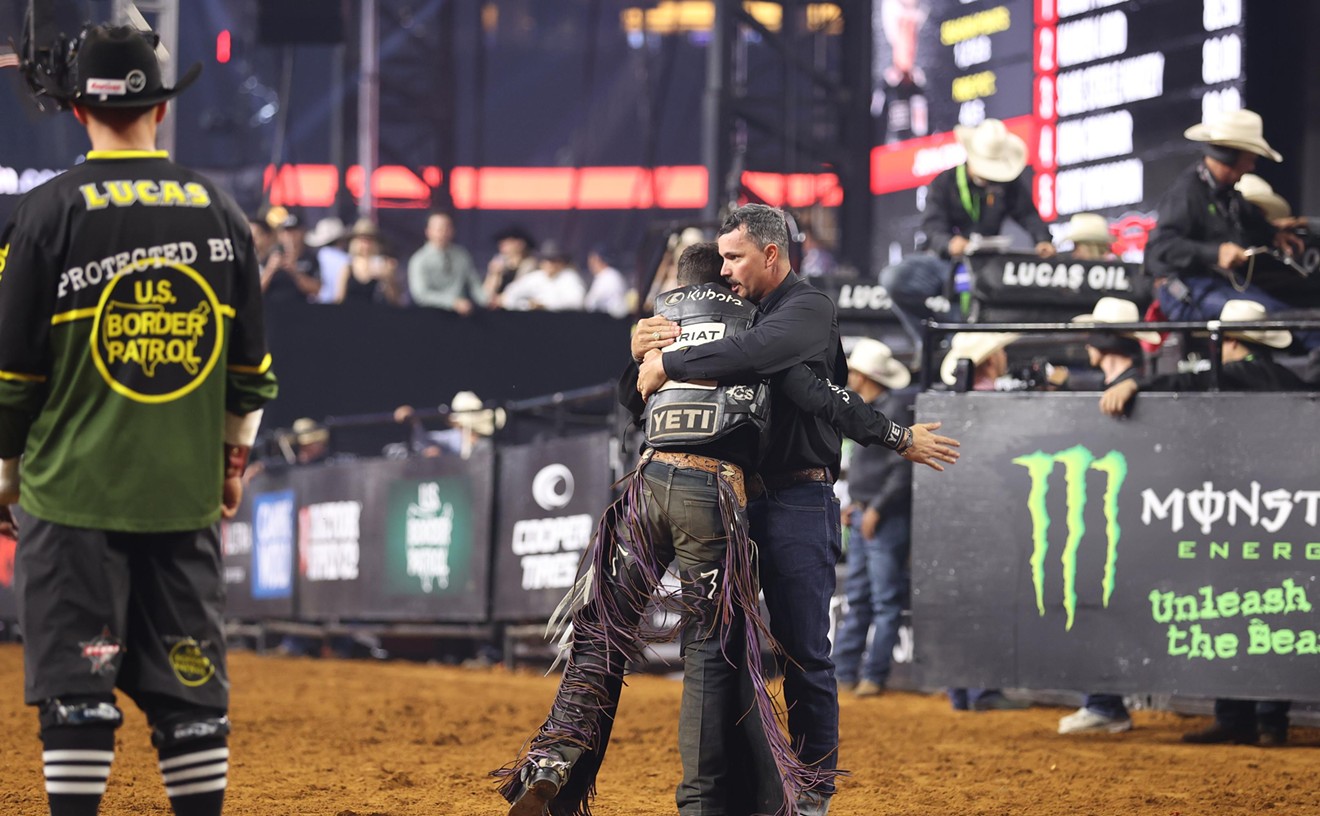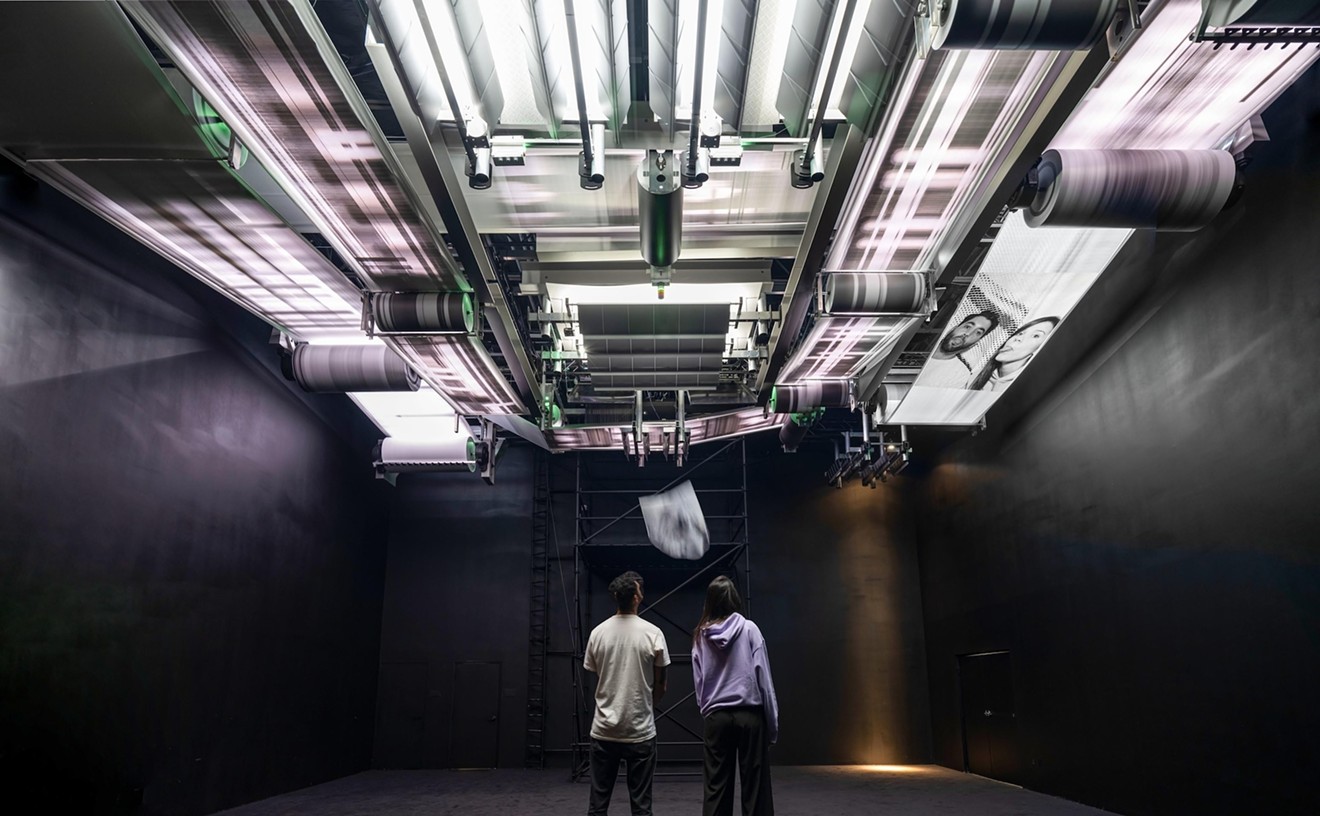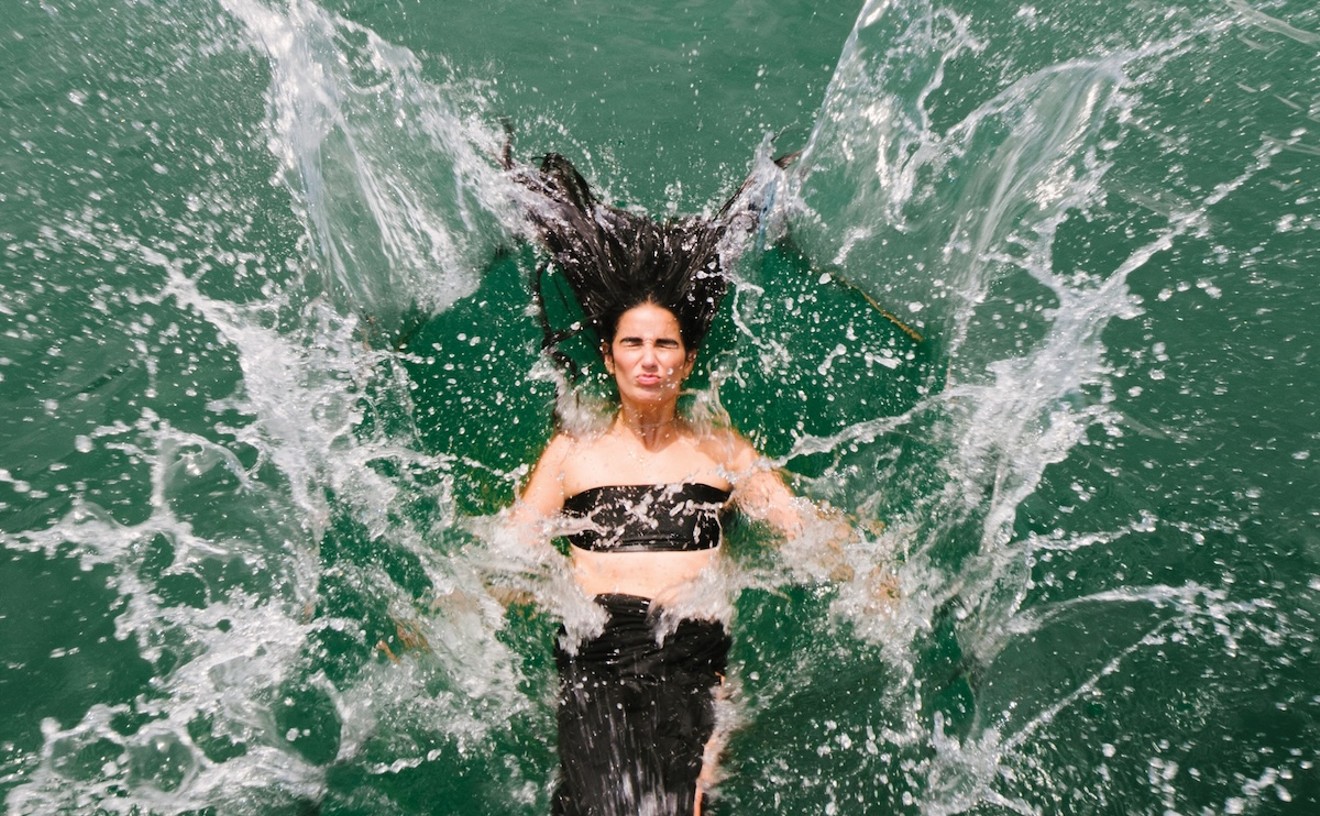The exhibit "Capture the Moment: The Pulitzer Prize Photographs," which opened last week at the Frost Art Museum, was two decades in the making. The idea began with Cyma Rubin, a Tony Award-winning producer, writer, and director.
Rubin came up with the idea when she was working in Japan as an international cultural producer for Nippon TV. She gathered images and interviews for a half-decade before producing 1999's Moment of Impact: Stories of the Pulitzer Prize Photographs. The documentary garnered her an Emmy Award, and soon she began researching images for a traveling exhibit.
"They loved photographs in Japan," she says. "And I thought that the Pulitzer winners would make for a great collection telling an international story."
Rubin's exhibit began traveling in 2000 and has been around the world. It adds two new images each year for current Pulitzer winners and is recognized as the most comprehensive collection of Pulitzer Prize-winning pictures.
The 166 photos on display at the Frost range from U.S. Marines raising the flag in Iwo Jima to Jack Ruby killing Lee Harvey Oswald to the World Trade Center burning. Together, they document some of the most tumultuous moments of the past seven decades.
Among the images that leave the most lasting impact are Michel duCille's photos of a notorious Miami crack supermarket. In 1987, duCille was a seasoned Miami Herald photographer. He had shared his first Pulitzer — for spot news photography — with fellow staff photographer Carol Guzy. The pair had covered the November 1985 eruption of Colombia's Nevado Del Ruiz volcano, which caused a massive mudslide killing an estimated 25,000 people.
But for Jamaican-born duCille, who is now assistant managing editor for photography at the Washington Post, 1987 was an even more toxic year. It was then that crack cocaine began ravaging America. His second Pulitzer, for feature photography, is a photo essay on crack cocaine addicts in a Miami housing project in 1988.
Back then, Miami was "ground zero" for crack, duCille mentions. "But the mainstream thinking then was that crack was a 'black problem,' and I was determined to draw attention to the fact that it was a crisis that impacted the entire community. At the time, I lived in El Portal and would often drive by a low-income housing project that had been overtaken by crack dealers and addicts on the corner of NE Second Avenue and 71st Street called 'the Graveyard.'
"The entire building, which housed mostly poor people, including the elderly and children, had been turned into a crack supermarket."
DuCille spent seven months documenting the endless flow of crack addicts at the Graveyard. "It was crazy. White folks would arrive there straight from work, buy a rock, then squat in a hall or a room to light their pipes up," he remembers. He paired with reporter Lynne Duke for a Tropic magazine spread on April 5, 1987. The story by Duke was a Pulitzer finalist. DuCille's image of a woman sucking on a makeshift pipe, made of a tiny liquor bottle with a smoldering rock glimmering in it, graced the cover.
"During the time we were there, the cops would occasionally raid the building and shutter the empty apartments with plywood to keep the addicts out," duCille recalls. "But as soon as they left, the Graveyard would reopen for business and return to the same-old, same-old."
Also among the groundbreaking images at the Frost are those of the six-month legal battle over custody of the 6-year-old Cuban boy Elián González. Associated Press photographer Alan Diaz remembers standing outside the home where Elián lived with relatives under an intense media spotlight after he was rescued in the Florida Straits.
"I was staked out outside Elián's Little Havana home, where he was staying with his uncle Lazaro González and cousin Marisleysis, from the end of November 1999 to April 22, 2000, when the government agents came for him," Diaz recollects. "I was there every day during that time, working 16 to 18 hours each day taking pictures. Over time, I got to know the family and most of the people outside the house who were protesting.
"But on April 21, which was Good Friday, I started noticing photographers, journalists, and strange people taking part in the vigils who were neither members of the media nor the regulars holding vigil. That's when I realized in my gut that something was about to go down at the house."
At the time, Diaz and a couple of others were taking turns sleeping outside the house in a neighbor's van. "We knew the government was not going to raid the house on Good Friday or Easter Sunday because those are important holidays for Latins," Diaz says. "My instinct was that they would come either that Saturday or Monday, so I went without sleep most of the weekend.
It was a hunch that paid off for Diaz and earned him the Pulitzer for spot news photography. "I was sitting outside the van watching the house a little after 5 in the morning. It happened with my cameras wrapped in a towel so the night dew wouldn't fog the lenses.
"All of a sudden, I heard a stampede of boots on the grass behind the house and [another photographer] yelling, 'Peter Pan, Peter Pan!' which was our heads-up over the radio. At the same time, a friend of the family, who looked like a bouncer and was always with Elián, opened the front door of the house and screamed, 'They're here, they're here!' in a moment of panic."
In an instant, Diaz bolted over the neighbor's fence and rushed into the house past Elián's stunned protector. "In the ten steps it took me to get into the house, I was able to set the shutter speed and lighting on my camera. I walked inside and saw Lazaro and Marisleysis and asked them where Elián was. In the confusion, I entered the room where he slept that you could see from a window facing the street, but he wasn't in there. The entire place was in pandemonium.
"When I saw he wasn't in his room, I rushed to the other room that belonged to his uncle, opened the closed door, and made out Donato Dalrymple, the fisherman who had saved Elián, hiding in the closet with the frightened boy in his arms."
Diaz immediately leaned against a wall and began shooting a series of pictures as a government SWAT team battered the front door. "I was crouched in the room with Elián and had already taken a photo I figured would run in the morning papers. That's when we heard the door crash and boots inside the house, and Elián began crying, '¿Qué está pasando? ¿Qué está pasando?' I answered, 'No esta pasando nada. No te preocupes.' And that's when the agents burst in.
"[One] approached Donato with the gun while another one told me to stop taking pictures, and I answered, 'No, this is my job — I have to,' and continued shooting."
As Diaz snapped his shutter, Dalrymple handed the boy over to a female agent in civilian clothes outside the bedroom door, and the six-month battle over Elián was suddenly over.
But the ordeal will forever haunt Diaz. "I have four kids, and I have heard every cry a child can utter. But I have to tell you that the screams from Elián I heard that day were the petrified reaction of a boy who had been pampered like royalty that ended in a moment of sheer terror."
Last, there is the work of Miami Herald photographer Patrick Farrell, who catalogued Haitian hurricane victims in 2008. That year, Farrell made four trips to Haiti, which in a month's span had been lashed by four storms that turned out to be among the worst in that nation's history.
Farrell was on the ground when Hurricane Ike hit the already-devastated country, destroying many of Haiti's homes and claiming hundreds of lives across the Western Hemisphere's poorest nation. Eight hundred Haitians died and more than a million were left homeless by the pounding storms that season. "I was there September 7 when Ike hit, and there had been lots of flooding from Hurricane Hanna the week before," recalls Farrell, who won the Pulitzer in 2009 for breaking news photography. "We flew in on a United Nations helicopter, and the bridges were out and transport was impossible across the country.
"Earlier, a school had collapsed and 90 children had died. In Gonaïves — which was under water, up to ten feet in places — the mud had flowed into people's houses, and they were all lined in the streets after fleeing their ruined homes, carrying the few things they could salvage.
"In the town of Cabaret, the scenes were horrific. Seventy people died there, and 30 percent of them were children. We were in Cabaret when the people were just starting to wake up to the horror of what had happened," says Farrell, whose searing images of the devastation helped galvanize international attention.
"You hope after witnessing a horrific disaster like that, it might result in some response to the crisis," he reflects. "Later on, when I was awarded the Pulitzer and the story had long faded from front-page news, the response was tempered with sadness. My thoughts returned to the Haitian hurricane victims, and I hoped the attention would become refocused on their story. It made me wonder why in some parts of the world there were still those who didn't know the tragedy happened."











